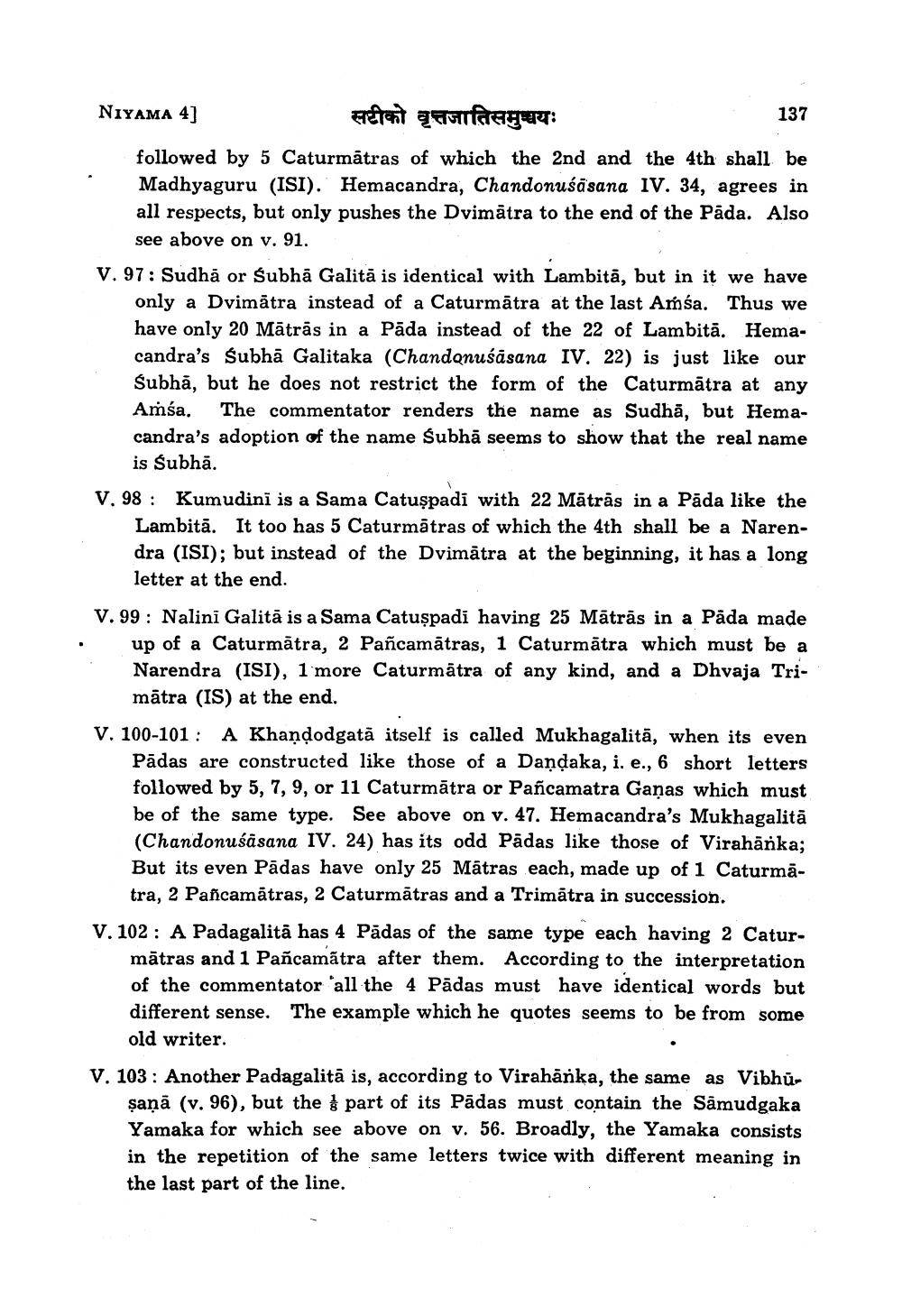________________
NIYAMA 4] सटीको वृत्तजातिसमुच्चयः
137 followed by 5 Caturmatras of which the 2nd and the 4th shall be Madhyaguru (ISI). Hemacandra, Chandonuśāsana IV. 34, agrees in all respects, but only pushes the Dvimātra to the end of the Päda. Also
see above on v. 91. V. 97: Sudhā or śubhā Galită is identical with Lambitā, but in it we have
only a Dvimātra instead of a Caturmātra at the last Añóa. Thus we have only 20 Mātrās in a Pāda instead of the 22 of Lambită. Hemacandra's Subhā Galitaka (Chandonusasana IV. 22) is just like our Subhā, but he does not restrict the form of the Caturmātra at any Amśa. The commentator renders the name as Sudhā, but Hemacandra's adoption of the name śubhā seems to show that the real name
is Subhā. V. 98 : Kumudini is a Sama Catuşpadi with 22 Mātrās in a Pāda like the
Lambitā. It too has 5 Caturmatras of which the 4th shall be a Narendra (ISI); but instead of the Dvimātra at the beginning, it has a long
letter at the end. V.99: Nalini Galitā is a Sama Catuşpadi having 25 Mātrās in a Pada made
up of a Caturmātra, 2 Pañcamātras, 1 Caturmātra which must be a Narendra (ISI), 1 more Caturmātra of any kind, and a Dhvaja Tri
mātra (IS) at the end. V. 100-101: A Khandodgată itself is called Mukhagalitā, when its even
Pādas are constructed like those of a Dandaka, i. e., 6 short letters followed by 5, 7, 9, or 11 Caturmātra or Pañcamatra Gaņas which must be of the same type. See above on v. 47. Hemacandra's Mukhagalitā (Chandonuśāsana IV. 24) has its odd Pādas like those of Virahānka; But its even Pādas have only 25 Mātras each, made up of 1 Caturma
tra, 2 Pancamātras, 2 Caturmātras and a Trimātra in succession. V. 102: A Padagalită has 4 Pädas of the same type each having 2 Catur
mātras and 1 Pañcamítra after them. According to the interpretation of the commentator 'all the 4 Pādas must have identical words but different sense. The example which he quotes seems to be from some
old writer. V. 103: Another Padagalitā is, according to Virahanka, the same as Vibhū
saņā (v. 96), but the part of its Pādas must contain the Samudgaka Yamaka for which see above on v. 56. Broadly, the Yamaka consists in the repetition of the same letters twice with different meaning in the last part of the line.




